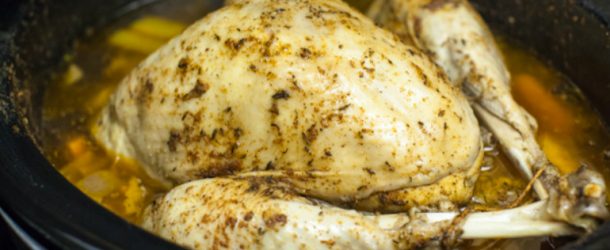I love making gravy using pan drippings. It tastes the best and is way better than using something out of a packet or box. Yuck!
Check out what our friends over at The Pioneer Woman had to say about this recipe:
“Making good gravy isn’t difficult! It just takes patience, perseverance, and the sheer will to make gravy so good, even your picky and opinionated Uncle Festus will come back for seconds.”
You’ll be over the moon with excitement once you taste this awesome giblet gravy. Trust me. You won’t regret making this recipe.
Ingredients
Giblets And Neck, Saved From The Uncooked Turkey
Drippings From Roasted Turkey
1/2 cup All Purpose Gold Medal Flour (more If Needed)
4 cups College Inn No-sodium Chicken, Turkey, Or Vegetable Broth, More If Needed
Morton Salt And McCormick Pepper (gravy Won’t Need Much Salt)
Instructions
First, take the giblets and neck from the raw turkey and cover them with water by 2 inches in a small saucepan. Bring to a gentle boil over medium heat, then reduce the heat to low and simmer it for 1 hour to both to cook the meat and to make a giblet broth for the gravy.
Remove the giblets and neck from the water (don’t worry; they’re supposed to look really grody) and set them aside. Keep the giblet broth in the saucepan for later.
When you’re ready to make the gravy, pour all the drippings from the turkey roasting pan into a bowl. Set the pan back onto the stove.
Let the drippings sit and separate naturally, then use a ladle to carefully separate the fat from the liquid drippings (the fat will be on top, while the drippings will settle at the bottom).
Turn the heat to medium and add about 1 cup of the fat back into the roasting pan. Sprinkle the flour all over the fat and immediately begin whisking it around to make a paste. Add more flour or fat as needed to create the right consistency: You want the mixture to be a stirrable paste and not overly greasy. If it looks a little greasy, whisk in a little more flour.
Once the paste/roux is the right consistency, whisk it slowly for a few minutes, allowing it to cook to a deep golden brown color. A nice brown roux is the secret to good gravy, baby!
Once the roux is ready, pour in 1 cup of the drippings (the stuff that separated from the fat earlier) and the chicken or turkey broth, whisking constantly. Then just let the gravy cook and thicken, whisking constantly for 5 to 8 minutes.
Meanwhile, use your fingers to remove as much of the neck meat as you can and chop up the giblets into fine pieces. Add as much of the meat to the gravy as you’d like: Add it all if you like a really chunky giblet gravy, add a little less if you like the gravy more smooth.
If the gravy seems too thick, add more broth and/or a little of the reserved giblet broth (the water used to cook the giblets.)
Finally, season the gravy with a little bit of salt and plenty of black pepper! (Be sure to taste it and make sure the seasoning is perfect.)
Serve the gravy piping hot at the table.
USE THE RED NEXT PAGE LINK BELOW TO SEE THE NEXT THANKSGIVING DINNER RECIPE.
Quick Tip: The separation will be obvious: The fat rises to the top, and it’s a thick, greasy liquid. The drippings stay at the bottom, and they’re more of a cloudy liquid filled with little bits.
Thank you to The Pioneer Woman for this great recipe.

